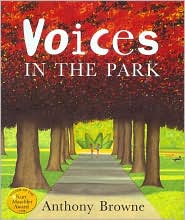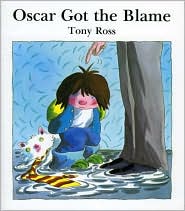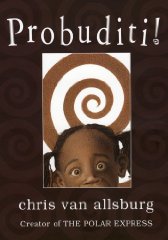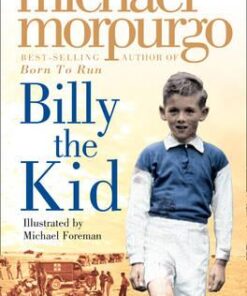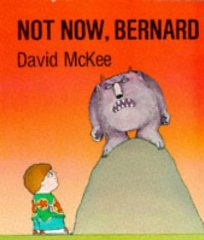Voices in the Park
Author: Browne, Anthony
Reading Age: 7 to 8 Second Class
Publisher: Transworld
Illustrator: n/a
ISBN-13: 9780552545648
Number of pages: 32
From the Publisher
Recommended as part of the Building Bridges of Understanding for 3rd to 6th Class to support children’s use of connections.
Recommended as part of the Building ... Read more
€10.50 Original price was: €10.50.€9.99Current price is: €9.99.
In stock online

From the Publisher
Recommended as part of the Building Bridges of Understanding for 3rd to 6th Class to support children’s use of connections.
Recommended as part of the Building Bridges of Understanding for 2nd to 6th Class for introducing inferring.
Four different voices tell their own versions of the same walk in the park. The radically different perspectives give a fascinating depth to this simple story which explores many of the author’s key themes, such as alienation, friendship and the bizarre amid the mundane.
Publishers Weekly
Browne again proves himself an artist of inventive voice and vision as he creates perhaps his most psychologically complex work to date via a commonplace experiencea brief sojourn to a city park. The author of King Kong and the Willy stories again features anthropomorphic chimps, who provide four unique perspectives: an uppity, overbearing mother and her glum son, Charles; and an unemployed fellow and his cheerful daughter, Smudge. What transpires factually is simple: the two children play together, their dogs do the same, the adults keep to themselves. Yet Browne reinvents and overlays the scene as each parent and child in turn describes their version of the events, altering light, colors and words. Browne sets up the tension by starting off with Charles’s stylishly dressed mother, who lets her ‘pedigree Labrador,’ Victoria, off the leash and then scoffs at ‘some scruffy mongrel'(Smudge’s dog). The matriarch similarly describes Charles’s newfound friend as ‘a very rough-looking child.’ Through Charles’s eyes, readers watch the tops of lampposts, gray clouds and a leafless tree take on the shape of his mother’s large chapeau, as her hat-dominated figure casts a shadow over the boy. In the succeeding page, Browne cleverly frames a shift in Charles’s mood with an illustration divided by a lamppost: threatening clouds and bare trees give way to blue skies and blossoming branches when a smiling, pigtailed (anything but rough-looking) Smudge on the sunny side of the park bench invites Charles to play on the slide. Browne offers readers much to pore over. His images reflect the human psyche; some are eerie (Edvard Munch’s ‘The Scream’ appears in the want ads; a burning tree provides the backdrop for mother and son’s silent exit from the park), others uplifting. For example, the subjects of two portraits leaning on the park wall, a gloomy Rembrandt self-portrait and a weeping Mona Lisa, transform into a dancing couple under a street lamp fashioned from a flower, as the jobless man departs the park, cheered by his daughter. Although some discomfiting tonesin both pictures and text appear in the vignettes, Browne also celebrates the redeeming power of connecting with another human being. His creativity invites youngsters to tap into their own, as they look for clues between the trees and add their own spins to Browne’s four interconnected tales. Ages 7-11. (Sept.)(PW best book of 1998)
Children’s Literature
Browne offers what appears on the surface to be a simple story about a visit to a park. What makes this book so different and compelling is seeing and hearing about the simple event from four very different perspectives. A proud and well off woman and her son Charles take a walk. She resents the attentions of an apparent mongrel and becomes worried when her son disappears from view. He, however, has met a young girl named Smudge, and they are having a great time playing and watching their dogs enjoy themselves. We also see the park visit through the eyes of the girl’s father, who is down and out and desperately trying to find work. Smudge first thought Charlie was a bit of a wimp, but they have a great time playing and he gives her a flower. In the last scene, Charlie wistfully looks at the park and hopes that he may someday meet up again with Smudge who, for a short while, brought some real joy into his life. The art is intregral to the story and the viewpoints. When we meet Smudge’s fat



